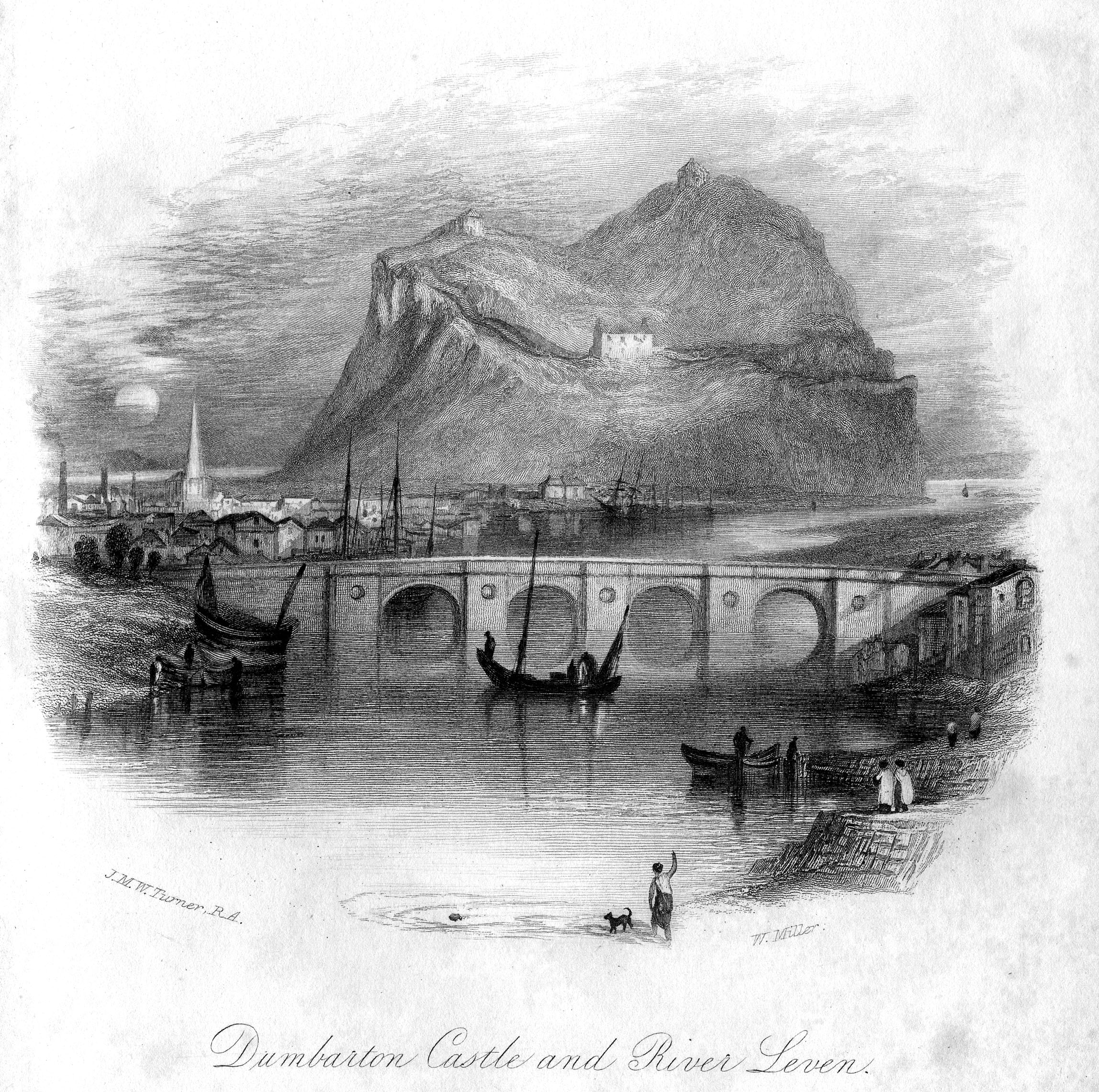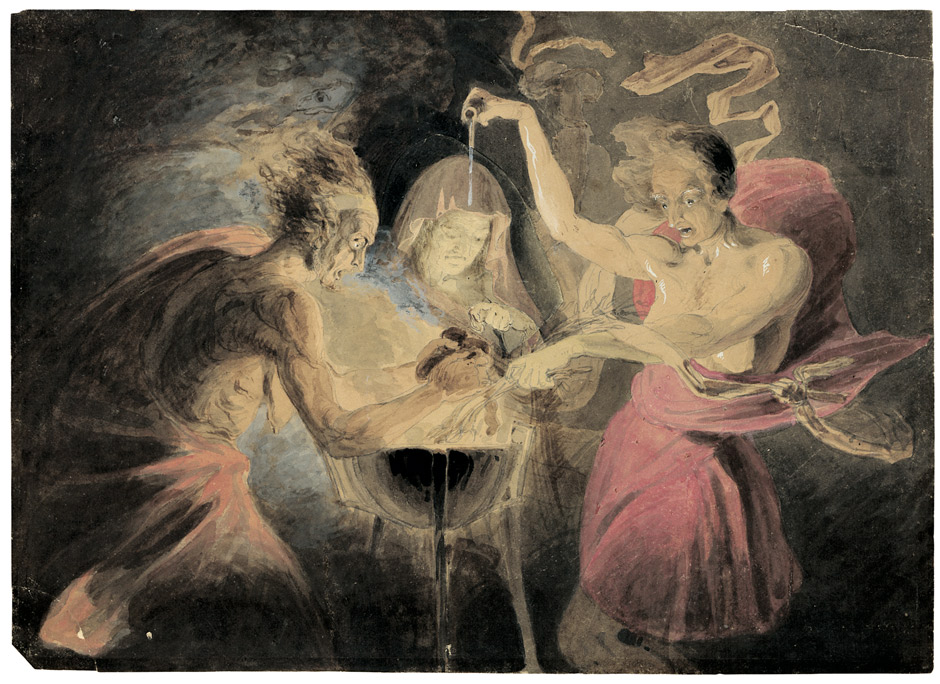In our last post we revealed some of the Halloween customs detailed in the Statistical Accounts, including some spooky ghost stories. Although superstitious beliefs seem to have been receding during the late Eighteenth Century, there are nevertheless many accounts of another devilish figure in the accounts: the witch. Such stories give us a real insight into what people in the eighteenth century and earlier believed in and how they dealt with alleged witches.
In Tongland, County of Kircudbright, the lower classes “firmly believed in ghosts, hobgoblins, fairies, elves, witches and wizards. There ghosts and spirits often appeared to them at night. They used many charms and incantations to preserve themselves, their cattle and houses, from the malevolence of witches, wizards, and evil spirits, and believed in the beneficial effects of these charms.” (OSA, Vol. IX, 1793, p. 328)
Several places are mentioned in the Statistical Accounts where witches were burnt. These include: near the Old Castle of Langholm in the County of Dumfries, where some of the witches here acted as midwives and had the power to transfer labour pains from the mother to the father! (NSA, Vol. IV, 1845, p.421); a hill in the parish of Mordington, County of Berwick, called Witch’s Know (OSA, Vol. XV, 1795, p. 187); another Witch’s Know in Gask, County of Perth (NSA, Vol. X, 1845, p. 282); and an upright granite stone located in the parish of New Monkland, County of Lanark, “where it is said, in former times, they burned those imaginary criminals, called witches” (OSA, Vol. VII, 1793, p. 280).
Spott in the County of Haddington was renowned as a habitation for witches (NSA, Vol. II, 1845 – p.227). In October 1705, “many witches were burnt on the top of Spott Loan” and indeed it is generally believed that the last witch who was executed in Scotland was burnt at Spott; a stone commemorative of the event, marking the place of execution, is to be seen a little way to the cast of the manse. It was also here in Spott, in 1698, where the trial of Marion Lillie, otherwise known as the Rigwoody Witch, took place (OSA, Vol. V, 1793 – p 454).Indeed, you can find a number of accounts of trials for witchcraft in the Statistical Accounts. The most complete report of a trial is that of the Trial of William Coke and Alison Dick for Witchcraft on September 17th 1633, which is found in the accounts for Kirkaldy, County of Fife, OSA, Vol. XVIII, 1796 – p.656 to 662.
Other witches are mentioned too, such as the Bargarran Witches who were seven men and women accused of bewitching a young woman in the parish of Erskine, County of Renfrew (NSA, Vol. VII, 1845, p.507 to 508 and p.122). Other renowned witches are Lillias Adie who, in 1704, was accused of witchcraft and “afterwards died in the jail of Dunfermline, and was buried within the flood-mark between the villages of Torryburn and Torrie” (Torryburn, County of Fife, NSA, Vol. IX, 1845, p. 732) and Gorm Shuil, or blue-eyed, a famous witch from Laggan in the County of Inverness “who was such an adept in her profession that she could transform herself and others into hares, and crows, raise hurricanes from any quarter of the compass she pleased, and perform other wonderful exploits, too tedious to mention” (NSA, Vol. XIV, 1845, p. 426).
There is a really interesting piece by Sir John Sinclair on the Castle of Dunsinnan or Dunsinane and the probability that William Shakespeare had collected here its traditions on Macbeth to use it in his celebrated play! (Collace, County of Perth, OSA, Vol. XX, 1798, p.242)
Witches also had a hand in the formation of the Castle of Dumbarton! It seems that Kilpatrick, a village in Dumbartonshire, both derives its name from, and gave birth to, the celebrated saint of Ireland, Patrick. The Devil was so incensed at Patrick’s sanctity and success in preaching the gospel that he:
sent a band of witches against him; that the weird-sisters fell upon him so furiously, that he was forced to seek safety by flight; that finding a little boat near the mouth of the Clyde, he went into it and set off for Ireland; that they seeing it impossible to pursue him, for it seems they were not of that class of witches who can skim along the waters in an egg shell, or ride through the air on a broom stick, tore a huge piece of a rock from a neighbouring hill, and hurled it, with deadly purpose, after him; but that, missing their aim, the ponderous mass fell harmless, and afterwards, with a little addition from art, formed the Castle of Dumbarton.
(Kilpatrick-New, County of Dumbarton, OSA, Vol. VII, 1793 – p. 99)

Dumbarton Castle (Rawlinson 518) engraving by William Miller after Turner. Created 1 January 1836. [William Miller [Public domain], via Wikimedia Commons]
In Forfar there was “a witch-pricker called John Ford who was sent for to prick witches, and was admitted as a burgess, on the same day with Lord Kinghorn. The bridle which was placed in the mouths of the witches condemned to be burned, and with which they were fastened to the stake, is preserved in the burgh.” Also, the field in which the witches suffered is pointed out to strangers as a curiosity (OSA, Vol. VI, 1793, p. 524). Those people charged with witchcraft were brought to trial in Forfar by a special commission appointed by the Crown in 1661. Interestingly, ‘the records of these trials were preserved and contained many curious statements; but it has recently been amissing.’ (NSA, Vol. XI, 1845, p.695)
In Gladsmuir, County of Haddington, (NSA, Vol. II, 1845, p. 188) “the Lord Commissioner and Lords of the Articles, after bearing the petition, granted a commission for putting to death such of the above persons as were found guilty of witchcraft by confession, and for trying the others, which, if we may credit tradition, was put into execution”.
In the parish of Torryburn it is even reported that the first Presbyterian minister after the Revolution “Mr Logan’s great hobby appears to have been the prosecution of witches” and on April 4, 1709, Helen Kay was rebuked before the congregation for having said that the minister “was daft,” when she ” heard him speak against the witches”! (Torryburn, County of Fife, NSA, Vol. IX, 1845, p. 732)
It is actually frightening to think that people from judges to the parish elite had the power to put to death those accused of witchcraft based on such questionable evidence as witch-pricking and confessions forced under duress (torture and sleep deprivation). Thankfully, by the seventeenth century there was a growing scepticism of witchcraft and by the time Scotland became part of the Commonwealth with England and Ireland in 1652 there was a marked decline in witch trials and prosecutions. It is both a fascinating and troubled period of Scotland’s history, and the traces of this time that are to be found in the Statistical Accounts are well worth exploring.

This is some scary stuff, when you think that its really not all that long ago. 150-200 years is potentially recent enough that some older people today may have spoken to people who witnessed such events.
Thanks for the great post
Thanks for your comment Gareth. You’re absolutely right – there are only a few generations separating us from these events. If you’re interested in the topic, you should have a look at the Volume 18 of the OSA which has a full account of the famous trial for witchcraft of William Coke and Alison Dick – it’s fascinating and gives a real insight into the social dynamics around these kinds of accusations!
Thanks – I’ll check it out
[…] If you would like to read more about witchcraft in Scotland, read our post Wicked Witches. […]
[…] In Erskine, County of Renfrew, “these unhappy creatures, (who seem by their own confession to have borne no good character,) were brought to trial at Paisley in the year 1697, and after a solemn inquest, they were found guilty of the crime of witchcraft, and sentenced to be burnt alive, which sentence was carried into effect at the Gallow Green of Paisley on Thursday the 10th June 1697, in the following manner: They were first hanged for a few minutes, and then cut down and put into a fire prepared for them, into which a barrel of tar was put, in order to consume them more rapidly.” (NSA, Vol. VII, 1845, p. 507) For more information on the crime of witchcraft read our blog post “Wicked Witches“. […]